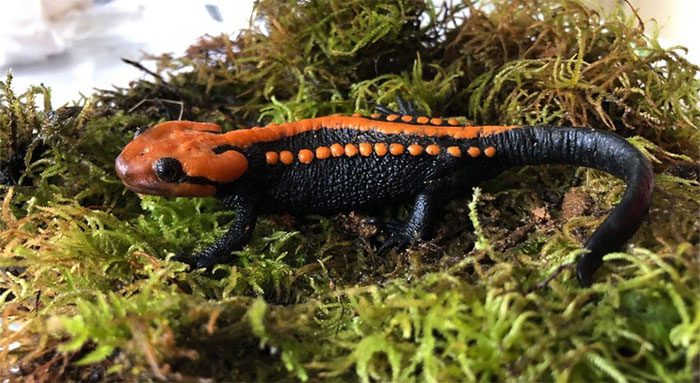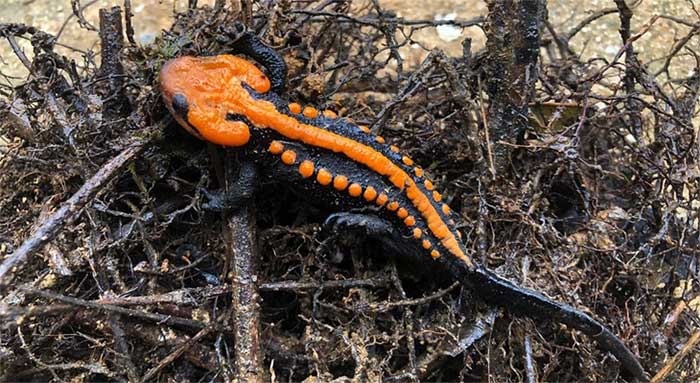In addition to its impressive appearance, the Ngoc Linh warty salamander surprises researchers by living at an altitude of 1,800 meters, while previous salamander species were only found at altitudes ranging from 250 meters to 1,740 meters.
Researchers from Vietnam and Germany have recently discovered and published a new species of warty salamander in the Central Highlands.

Ngoc Linh Warty Salamander – (Photo: PHÙNG MỸ TRUNG).
The new species is scientifically named Tylototriton ngoclinhensis – Ngoc Linh Warty Salamander. This is an exciting and unexpected discovery regarding amphibians belonging to the Caudata order in Vietnam.
So far, six species of salamanders have been discovered in Vietnam, all of which are found only in the northern region up to Nghe An. This recent publication has encouraged herpetologists to anticipate the discovery of more new salamander species in the Central region, from Quang Binh to Kon Tum.
In the journal ZooKeys, researchers reported that the new species has been validated based on distinct morphological and molecular biological evidence. This is a remarkable finding as it is one of the most colorful species in the genus Tylototriton and also the first salamander species recorded in the Central Highlands at an altitude of 1,800 meters.
This discovery sets a record for the highest altitude at which a salamander has been found in Vietnam. Previously, salamander species were only known to exist at altitudes ranging from 250 meters to 1,740 meters.
The new species is located approximately 370 kilometers away from the nearest Tylototriton population, making this an important discovery in terms of evolutionary and zoogeographical significance.

This is one of the most colorful species in the genus Tylototriton – (Photo: PHÙNG MỸ TRUNG).
The Ngoc Linh warty salamander was first discovered in 2018. Herpetologist Phung My Trung stated that he was certain this was a new species at that time and that it would be one of the most exciting announcements regarding the Caudata order in Vietnam.
However, it took over four years and numerous surveys in deep valleys and high mountains before he had the opportunity to gather enough samples for the publication of this salamander species, which he describes as “extremely beautiful and extremely rare.”
“I discovered an ecological niche of Ngoc Linh warty salamanders after a research trip in the Central Highlands. I waited for the next rainy season, hoping to find mature pairs mating and laying eggs.
The most surprising thing was seeing an adult; it was so beautiful that my hands trembled while holding the specimen, unable to believe my eyes.
Over those years, aside from the time, effort, and money, I had to sacrifice many things to find this beautiful and rare amphibian. I dedicate this exciting discovery to those who accompanied me during the challenging times throughout this journey of finding a new species,” he shared.
According to researcher Phung My Trung, salamanders belonging to the Caudata order are ancient creatures that remain on Earth. Their genome is eight times larger than that of humans (approximately 24GB).
Researchers discovered that to piece together the genetic sequences, extremely powerful computer systems are required. It took about six months to analyze the genes and roughly two years to fully understand and complete the sequencing of this species’ genome for research purposes, necessitating a significant financial investment.





















































